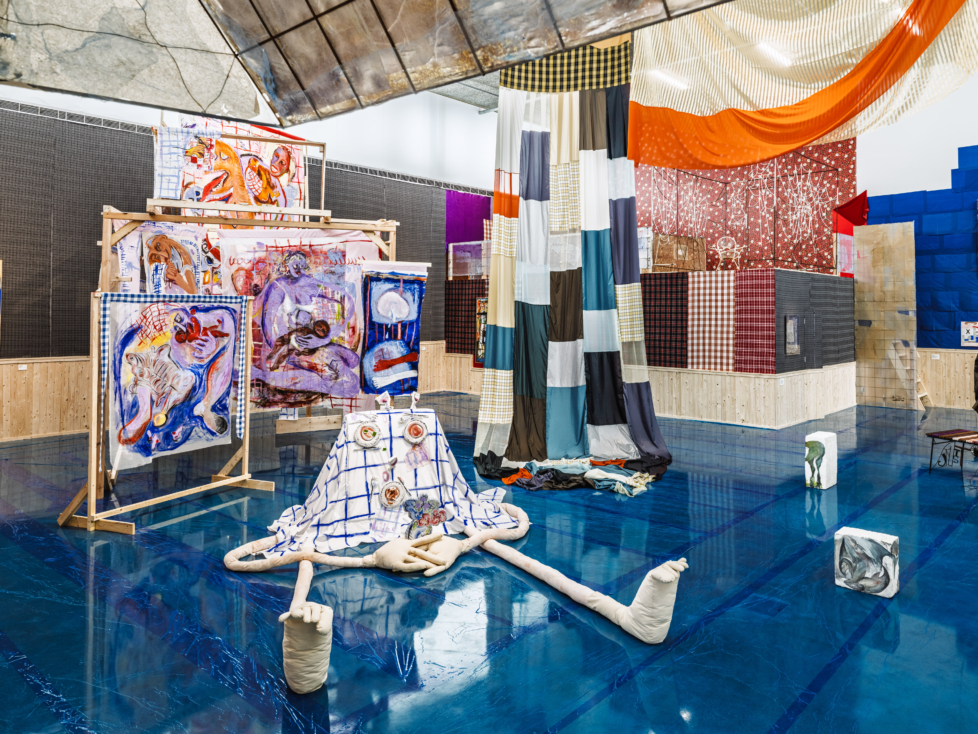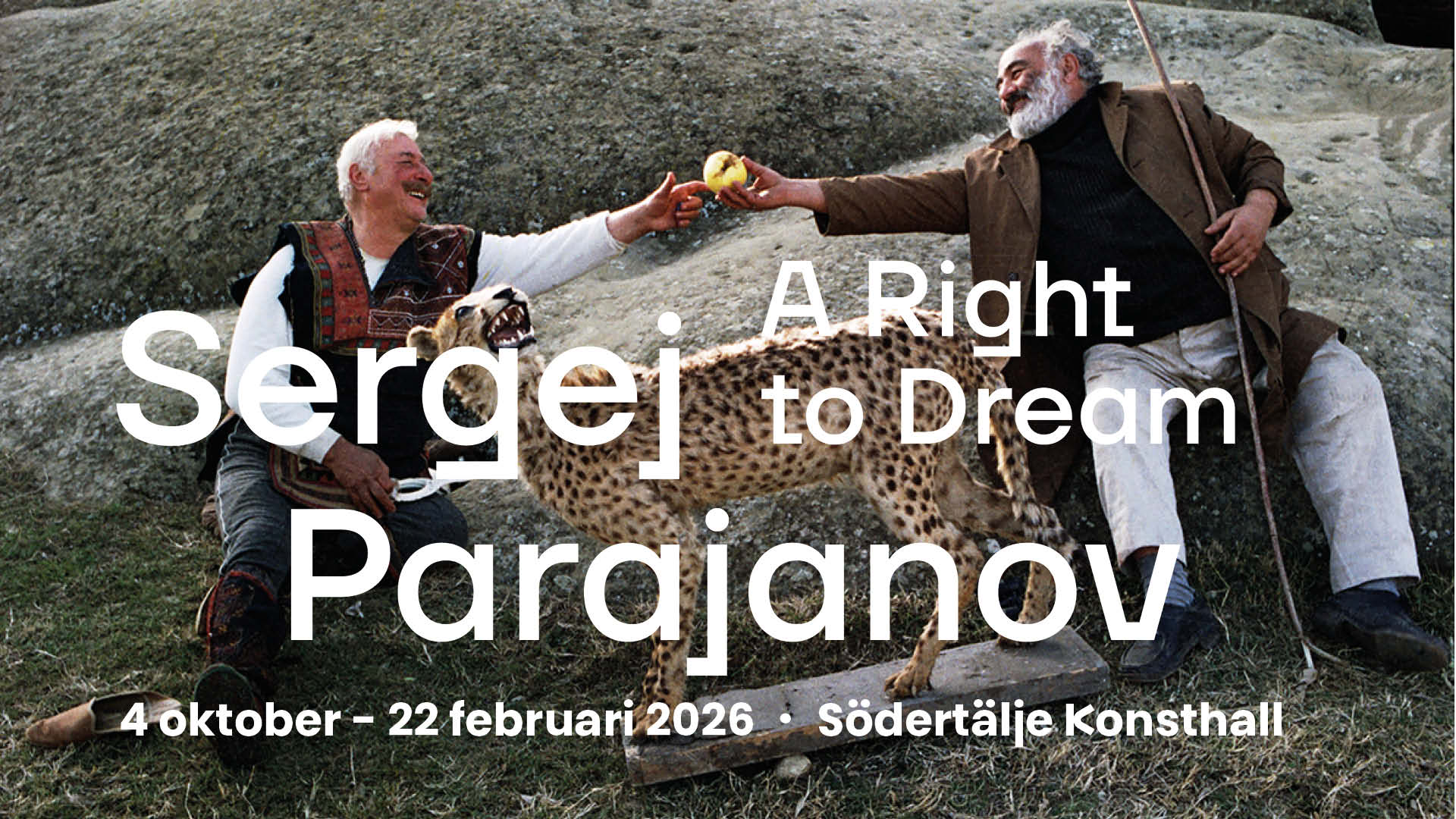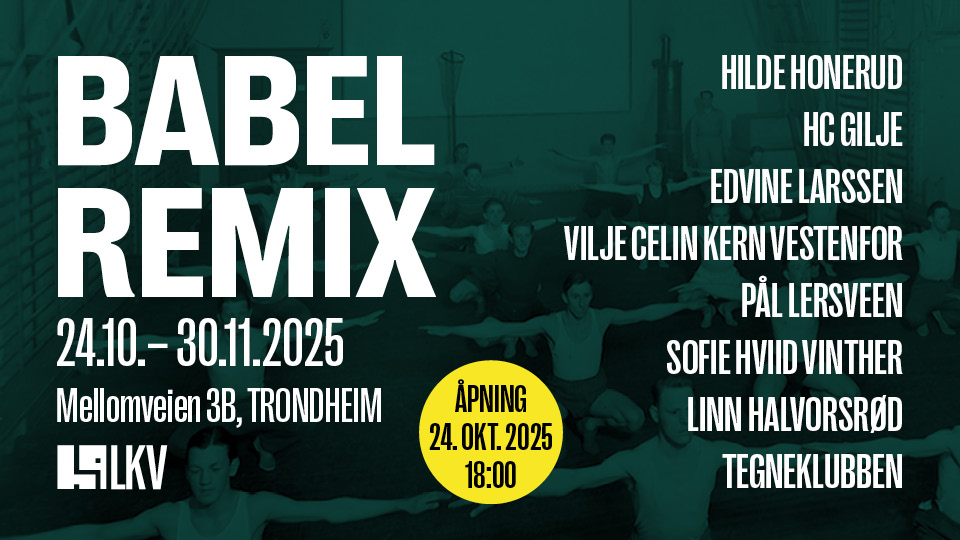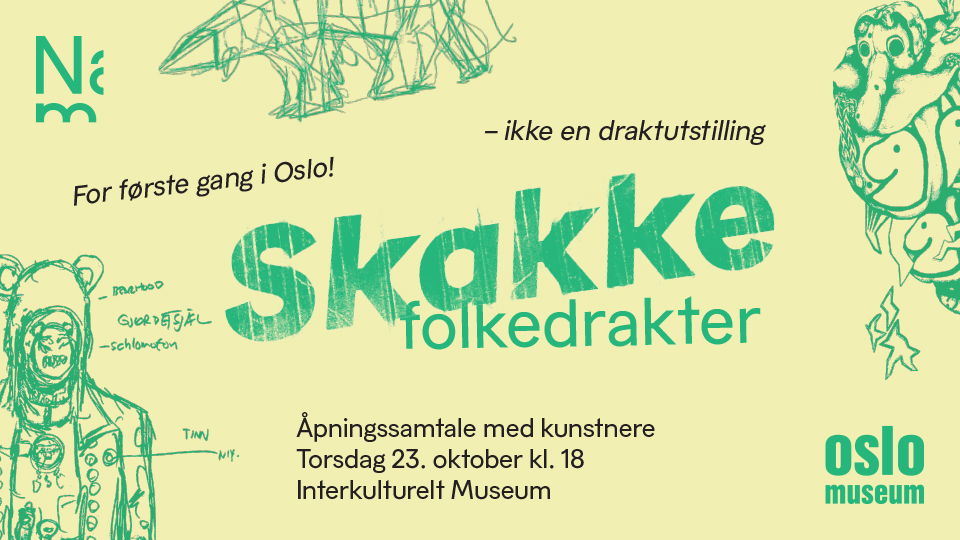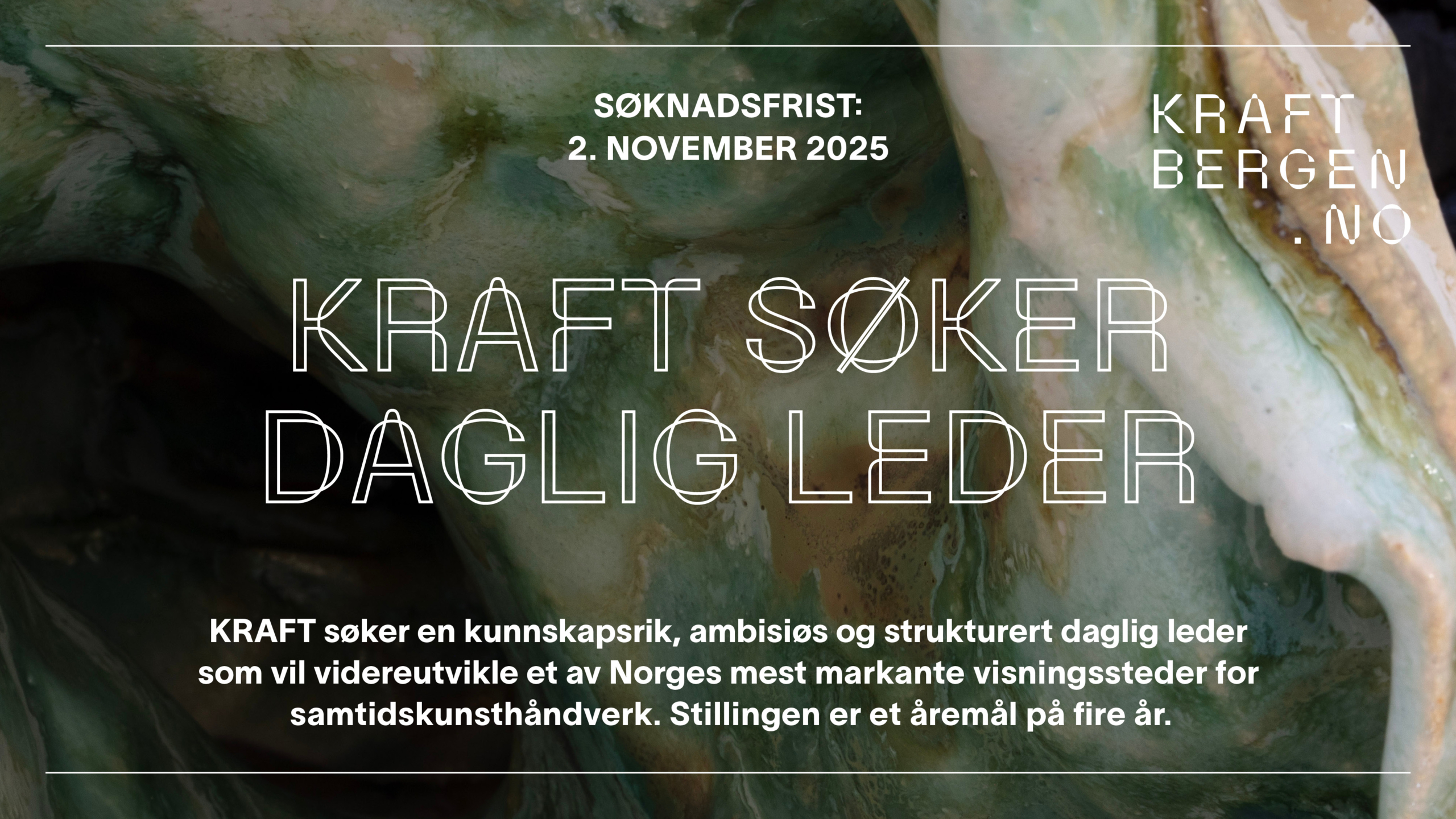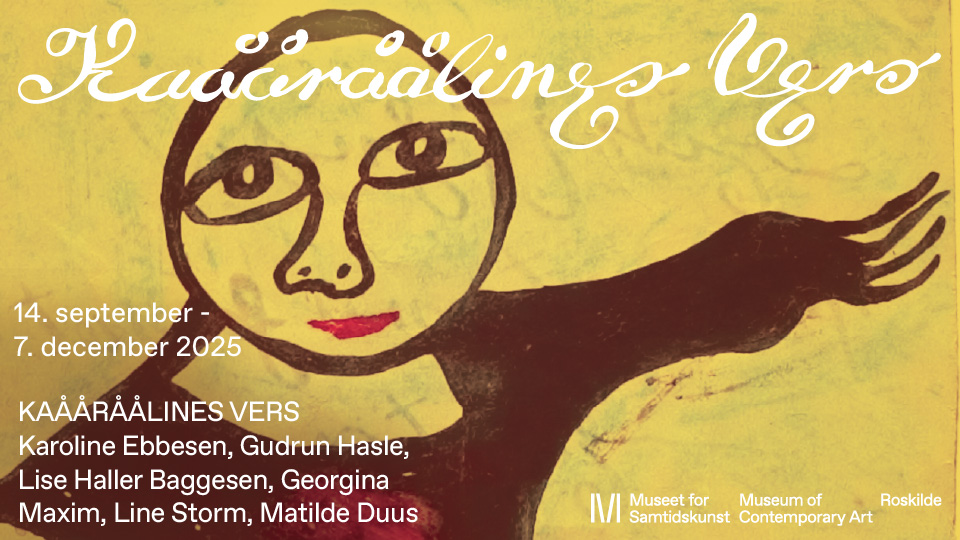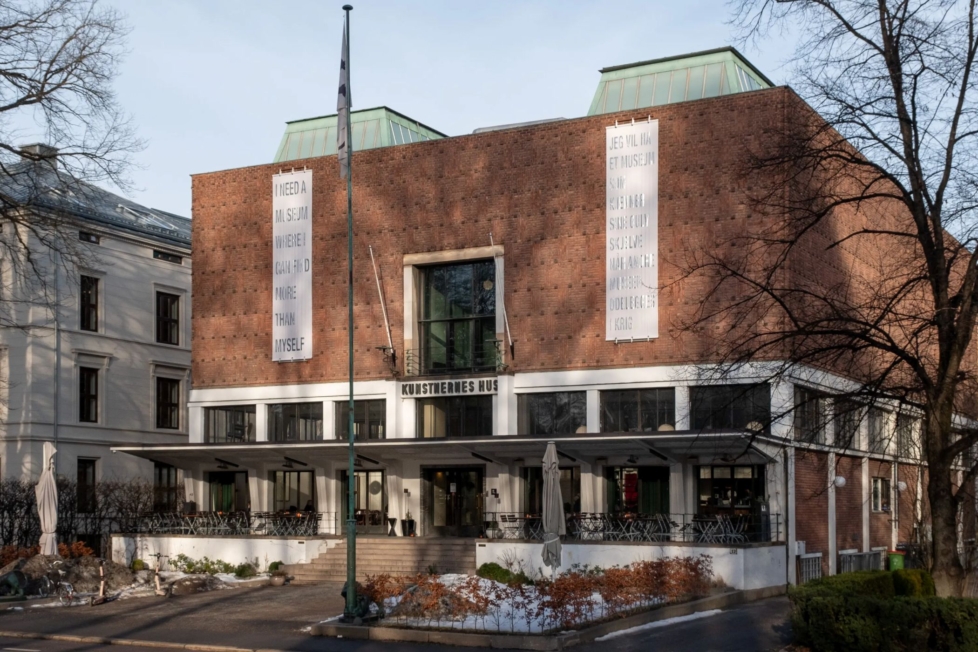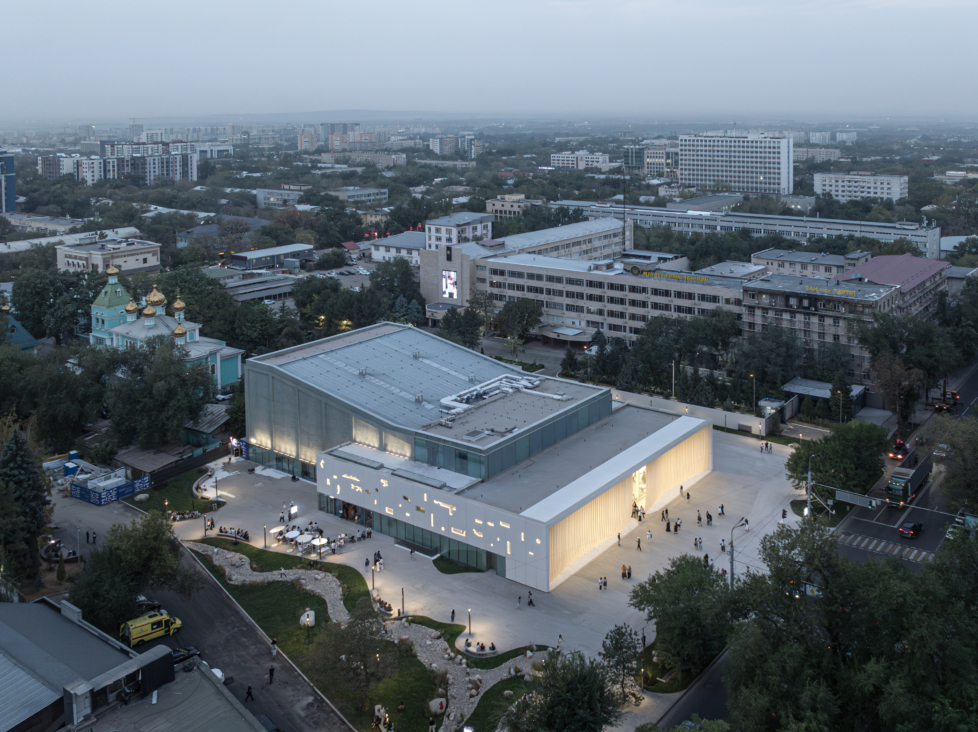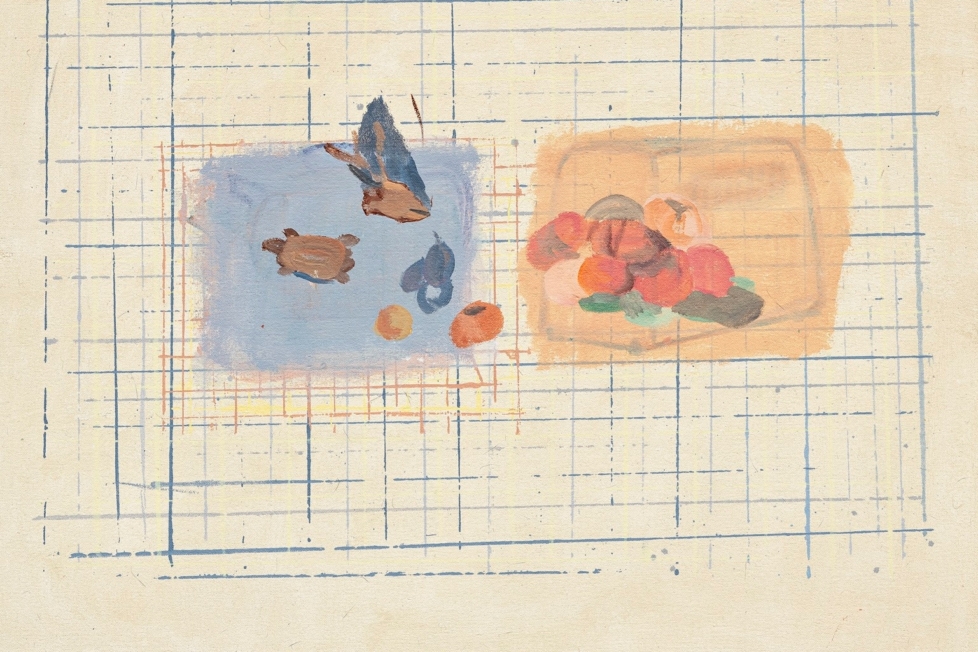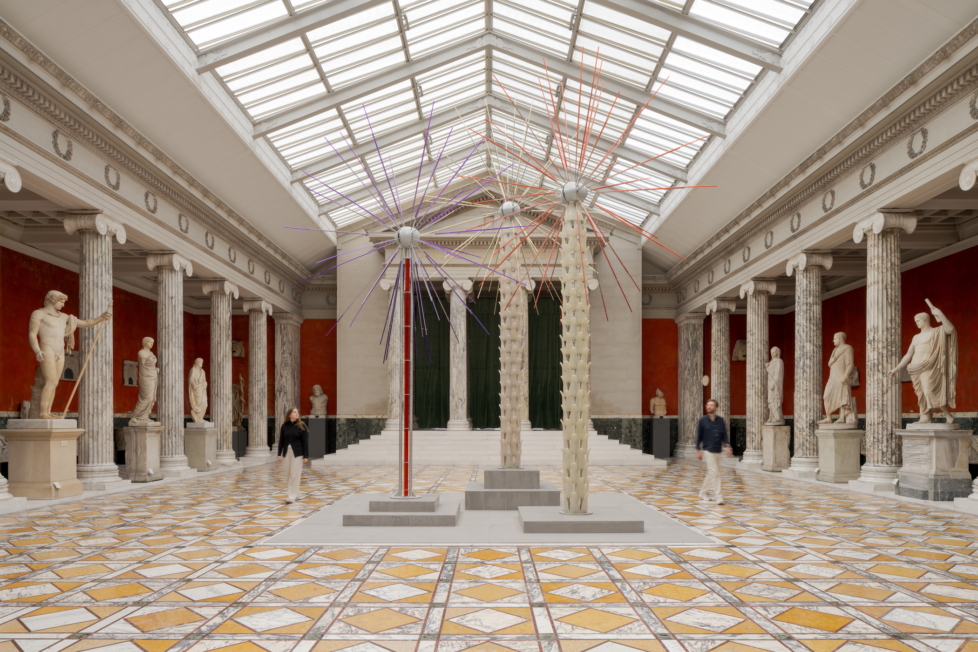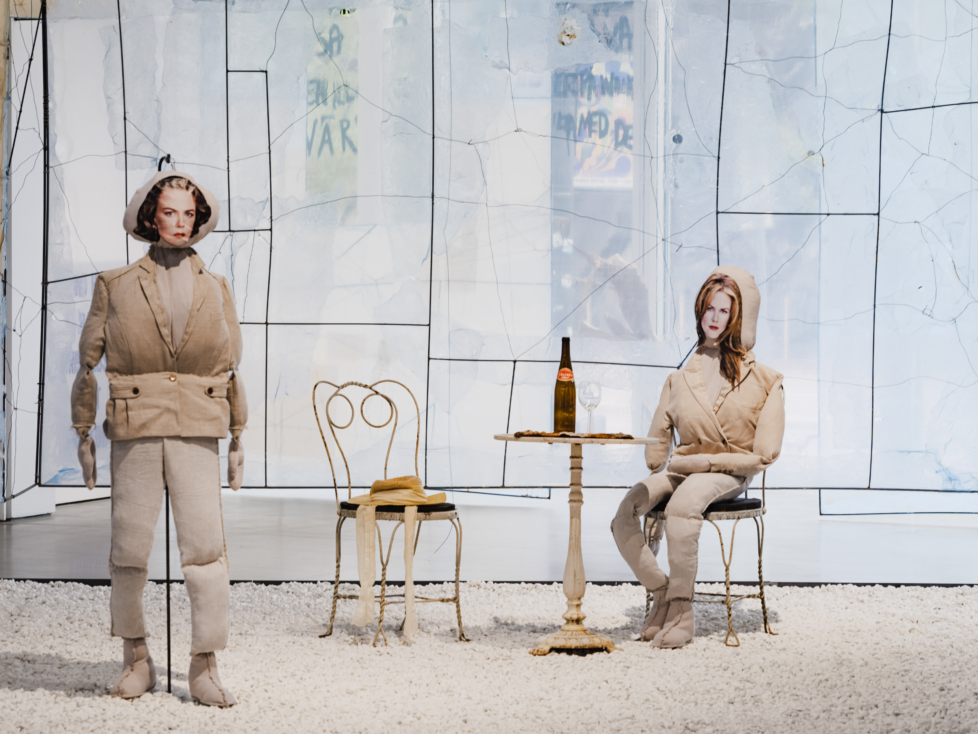
Entering Bonniers Konsthall these days feels like walking through an avant-garde art show in Duckburg, the fictional home of Donald Duck and company. A scenography of rebar, wood paneling, construction plastic, and oilcloth by Alfred Boman plays like a chaotic pastiche of artistic freedom. At the same time, there is incredible aesthetic precision, sharpness, and fragility in the artist’s birdlike papier-mâché sculptures and technically sublime paintings that feel both outdated and hypermodern at once.
Yes, this is Alfred Boman World – but it’s no solo show. Curator Joanna Nordin, Director of Bonniers Konsthall, has gathered artists from across the Nordic region for Playa!, a “new artistic revolution” that lets visitors “meet art on poetry’s terms.” According to Nordin, art has painted itself into commercial and institutional corners to the point that it has lost its meaning. Poetry, however, has managed to slip past “the neoliberal logic of late capitalism.”
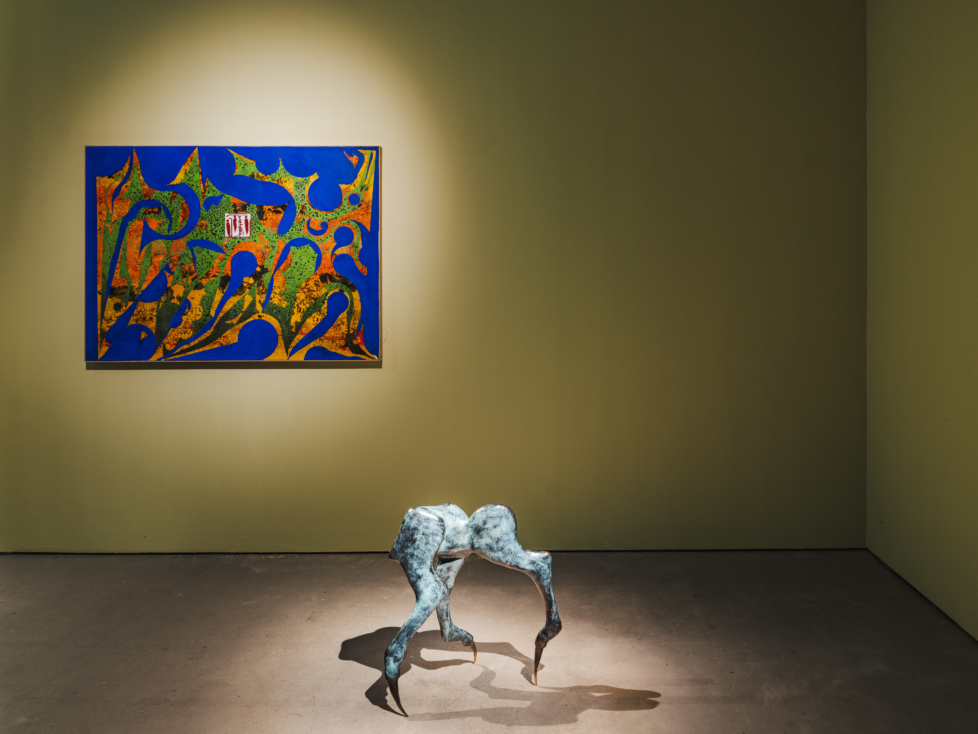
I find it a bit hard to take the exhibition’s premise seriously. Stockholm’s young art scene alone is one example that feels both urgent and vital nowadays – something Nordin seems to agree with, judging by both the artist list and programming, which largely revolves around projects and galleries such as coyote, Antics, Beau Travail, and Issues. And if institutions are the problem, can they really offer a solution simply with a touch of poetry?
But poetry is trendy. And many of the artists also figure on the current it-lists – Sally von Rosen, Elis and Militza Monteverde Burrau, Dimen Abdulla, Melanie Kitti – with more than a few living up to the hype. Nordin clearly wants to be where it’s happening, though perhaps without fully understanding what is actually going on. What many of the artists seek is not freedom through political illusion, but freedom from it. Their work does not preach a revolutionary showdown, but embodies our entanglement in the systems of the present.
In the first room, a video by Ursula Reuter Christiansen plays behind a checkered curtain. Dressed in a wolf fur coat, the artist drones on about how it both is and isn’t too late – zu spät. It feels political and, her being the exhibition’s oldest artist, a bit existential. Next door, Sally von Rosen’s Mrs. Sphere (2024), a bony little bronze creature with sharp claws, sits in the spotlight on the floor. On the wall, hangs Boman’s mixed-media painting I drakens mage (In the Belly of the Beast, 2022).The dim lighting, the skeletal sculpture, and the cracked stone-like surface of Boman’s painting turn the room into a kind of ancient sci-fi catacomb.
Out in the large hall it gets harder to know what I’m supposed to feel, as expressions and moods are tossed about in every direction. I wade through a flock of inflated penguins by Benedikte Bjerre (Birds, 2017), while to my right a set of teardrop-shaped fantasy dioramas by Eetu Sihonen hang mounted on twisting pieces of wood (Morning Dew I–V, 2024). To the left runs a perforated plaster wall by Boman Druvan/Stockholm investment plommonskalle (The Grape/Stockholm Investment Plum Skull, 2025). Across the room, Edit Sihlberg’s serious still life painting is placed atop Boman’s patched-up paper walls.
Different worlds have been placed next to each other in ways that collapse the logic of both the exhibition and the artworks. For a show that talks so much about language, the artists and the curator seem more often to speak past or over each other than to engage in meaningful conversation.
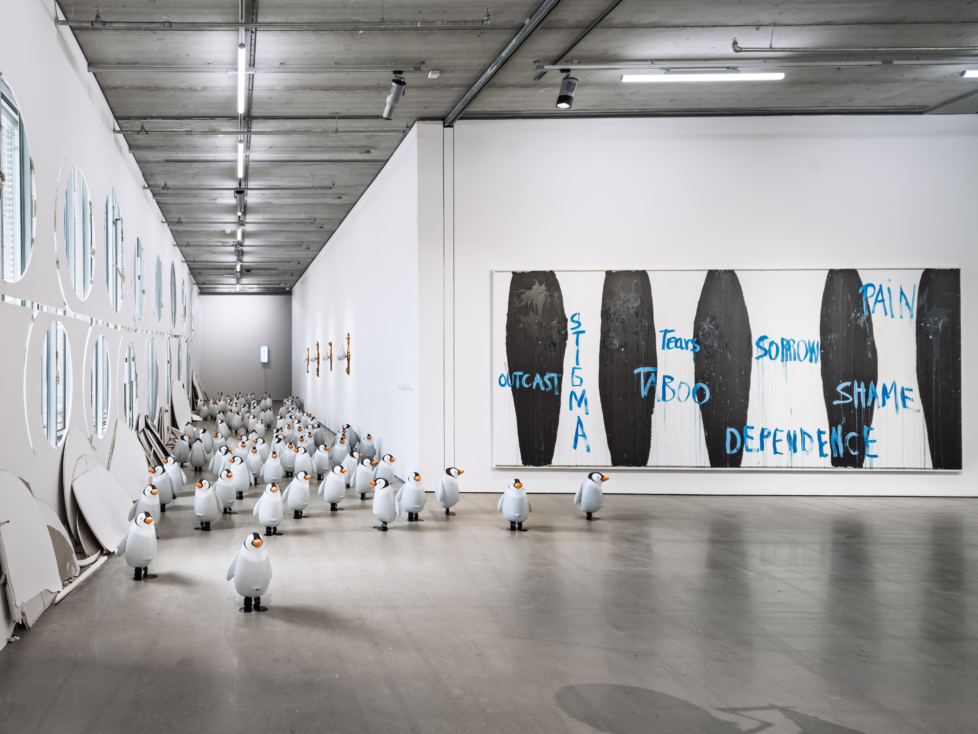
Also, Boman’s work is insistently separated into “art” and “scenography”, which feels a bit odd as his whole contribution reads as a Gesamtkunstwerk. His works are not just objects but stagings, of which the viewer inevitably becomes part. I look at art, but I am also looking at the image of myself looking at art. And the art is strange – perhaps silly. Am I silly?
It’s hard not to feel caught in the act, chin in hand, brow furrowed, and bare bottomed like Donald Duck. Here, as in much contemporary experience, reality is filtered through layers of fiction; we see ourselves through the eyes of others, though the filters of our feeds. Boman offers no escape. On the contrary, he throws back an image of an image of a reality already twice removed.
Some artists have worked with similar alienatiing reflections, and fit neatly into the show’s immersive frame. In coyote’s bar déjà vu (2025), furnished with items borrowed from Stockholm dive bars, which is activated now and then during the exhibition, you can take part in the relational drama of the cool-kids art club, only to have it reflected back at yourself through a mirror behind the counter. You both participate in the work and watch it.
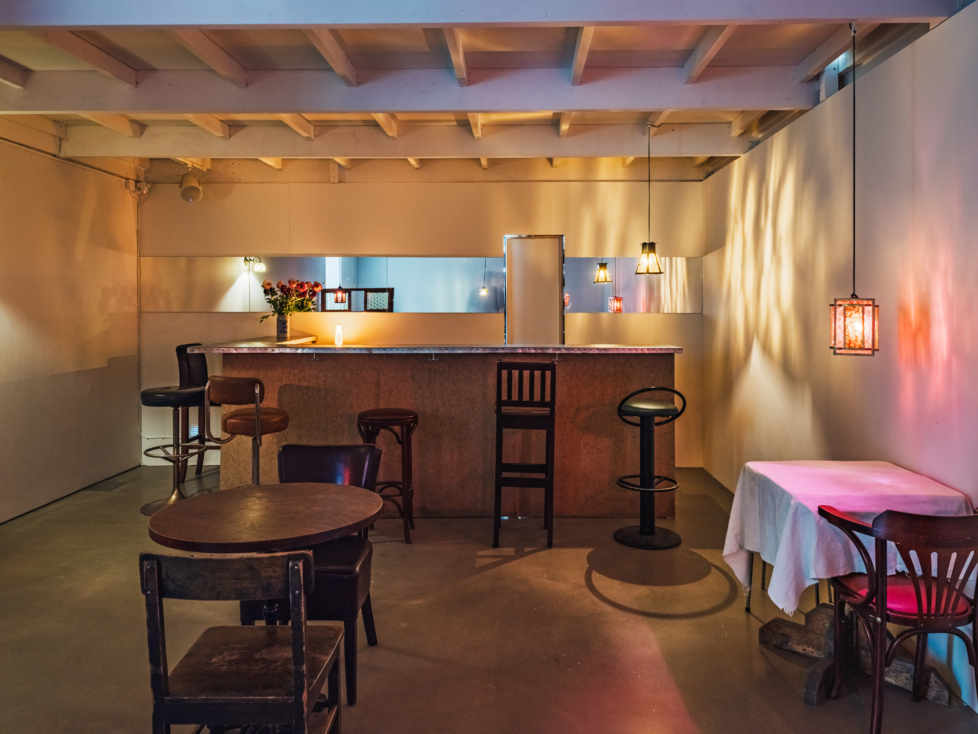
Hilde Retzlaff’s installation Nicole Kidman and Nicole Kidman (2024) consists of two fabric dolls with different Kidman faces printed on them, playing backgammon on the beach. They are simultaneously alive and dead on a stage – as if the play goes on even after life has left the room.
As a visitor to Playa! you often end up as someone arriving late to the party. What’s left are scraps, traces, in-jokes some people get and others don’t. Militza and Elis Monteverde Burrau show En stalkers formativa år (The Formative Years of a Stalker, 2025), a series of paintings of paper sheets filled with phrases overheard at the opening. Marthe Ramm Fortun presents remnants of her performance ROTUNDA (against the archival impulse) (2025) in different spots around the gallery: crumpled purple script pages pasted over photographs of herself reading from those same pages in various city settings – in one image, we see her inside a trash bin.
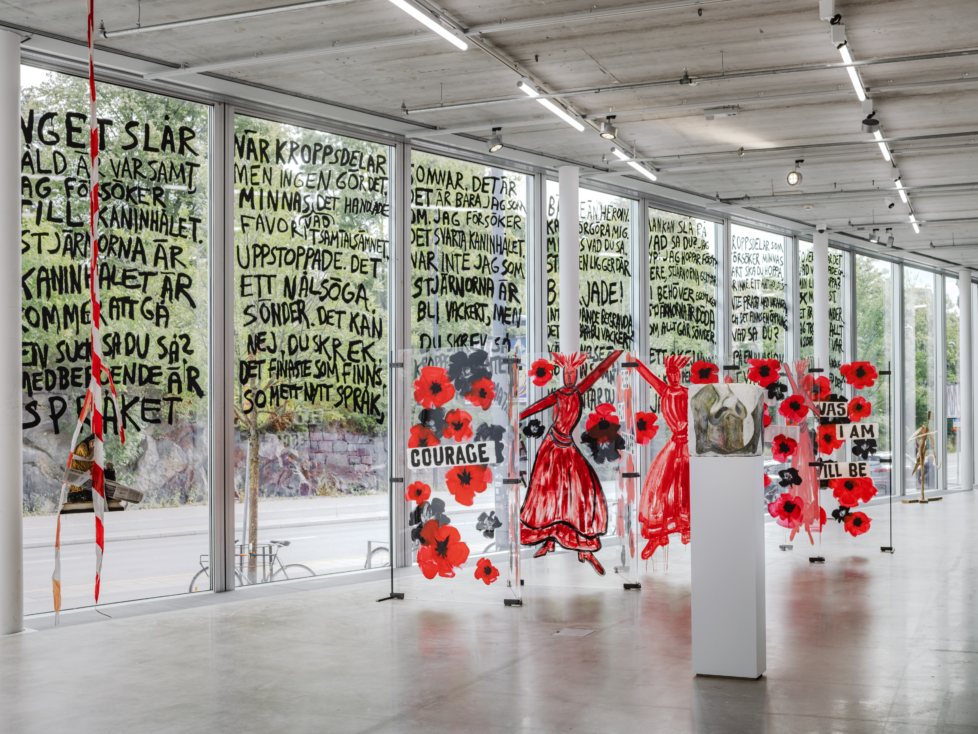
Instead of the relational aesthetics of the 1990s, with its ideals of community and participation, what emerges here is a more individualised group experience – a sort of 2020s version: “you had to be there, and if you know you know.” Rather than fostering collectivity, Playa! points to our contemporary moment as a world of parallel realities, while simultaneously fuelling the myth of the un-shareable life outside the feeds. Precisely because the works are so reference-heavy, the experience is also closed. What you bring in is what you get back. It’s not universal, but claustrophobic: funhouse mirrors spitting back a skewed reflection, always shaped by the viewer’s position.
But when the dark, neo-relational artists are set against those not at all interested in distantly playing with fiction and reality, they unfortunately short-circuit each other. I think of how Sihlberg’s paintings strive for the sincerely beautiful, and how Reuter Christiansen aspires to the politically direct; or how Eetu Sihonen draws the viewer into a fairytale-realist world. The dissonance punctures the attractively alienated atmosphere and causes the exhibition to collapse.
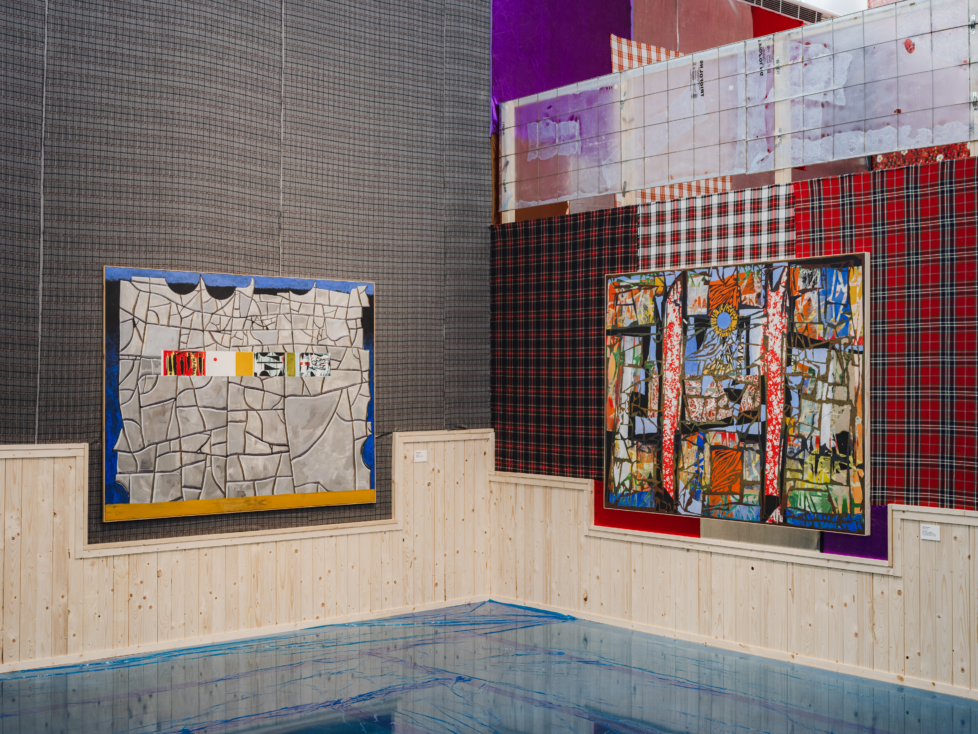
Playa! presents itself as an open, process-driven arena for encounters between artists, audience, and institution. But, at times, the calculated mess becomes clutter without direction. In the central room, the exhibition seems to be play-acting as an artist’s studio and several works turn into glossy color bombs. Additionally, a platform cordoned off with a chain is almost symbolic: the institution can’t convincingly pretend to be the free zone it longs to be.
Nordin would have fared better by daring to trust in the local scene’s own strength, instead of aligning her show with a kind of grant-application rhetoric where the whole Nordic region must converge, every problem must be solved, and every perspective must be highlighted – with wall texts about late capitalism, revolution, artistic resistance, beauty, and so on. At a moment when contemporary art so often aims for the global and universal, it is refreshing to encounter artists digging into the uncomfortably particular. There lies something truly interesting, which never quite makes it to the centre at Bonniers Konsthall.
